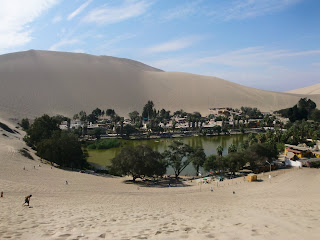Playa Blanca is an incredible caribbean beach that is perfectly under-developed where you can camp or rent a hammock. There are no annoying hotels with pools or hostels full of 20 something hormonally-charged twerps getting pissed. There are no boutique shops, there are no dickheads with ATVs. Instead there's blue skies, warm clean water, pelicans, cows and a few basic businesses.
Playa Blanca is on an island, a short distance away from the old colonial port town of Cartagena in Colombia. Because it's the caribbean it's always hot.
How to get there? Well there's the expensive way and there's the cheap way. The expensive but convenient way is to take a speed boat from Cartagena port. You have to haggle for the boat price (we got our tickets for $15 per person) and then you have to pay a port tax ($6 per person). The boat takes about an hour. It's a flat bottom boat that violently bobs up and down even on the smoothest waters. On the return journey with the boat you have to negotiate with the captain and you don't pay tax. We got it for $7.50 per person. Alternatively, there's a bus going from the market in Cartagena. Again you have to haggle. The big saving is there's no port tax.
Once you get to Playa Blanca there's nothing to do but relax. Swim, smoke blow, lie in a hammock, play with the dogs, get a massage, chat with the locals. In the evening the sun sets over the ocean. A magic time for a rum and coke and a spliff on the beach.
It's a really long beach. It gets a few boat loads of tourists every afternoon, but they just stop for a meal and a swim and then go home. On Saturday and Sunday masses of locals catch the bus to the beach, but they all congregate in the one corner and get pissed. That's the only time you see the police there; to control the weekend binge drinkers.
We stayed in the middle of the beach next to a small restaurant and shop. We were the only one's staying there. We had 3 dogs to guard our stuff. We camped literally on the beach, only 10 metres from the water's edge.
The food in the restaurant was limited (chicken or fish with chips or rice) and it was comparatively expensive. We knew this was going to be the case so we bought water, tinned food, jam, bread and biscuits with us. During our three blissful nights on the beach we hardly spent anything.
It was basic living - the shower and toilet were open air - but anymore would definitely be less in my opinion.
Playa Blanca was quite possibly my favourite place in South America. Why? The beautiful beach, the warmest water, the isolation, the nature, the friendly people and the lack of people.
 Sunset with great rum and good green. What a winner!
Sunset with great rum and good green. What a winner!
 The bucket shower. $2 per bucket.
The bucket shower. $2 per bucket.
 The restaurant with our guard dogs snoozing.
The restaurant with our guard dogs snoozing.

 Just behind our tent was a lagoon with cows. One night they passed en masse in front of our tent; much to the chagrin of the dogs.
Just behind our tent was a lagoon with cows. One night they passed en masse in front of our tent; much to the chagrin of the dogs.

















































